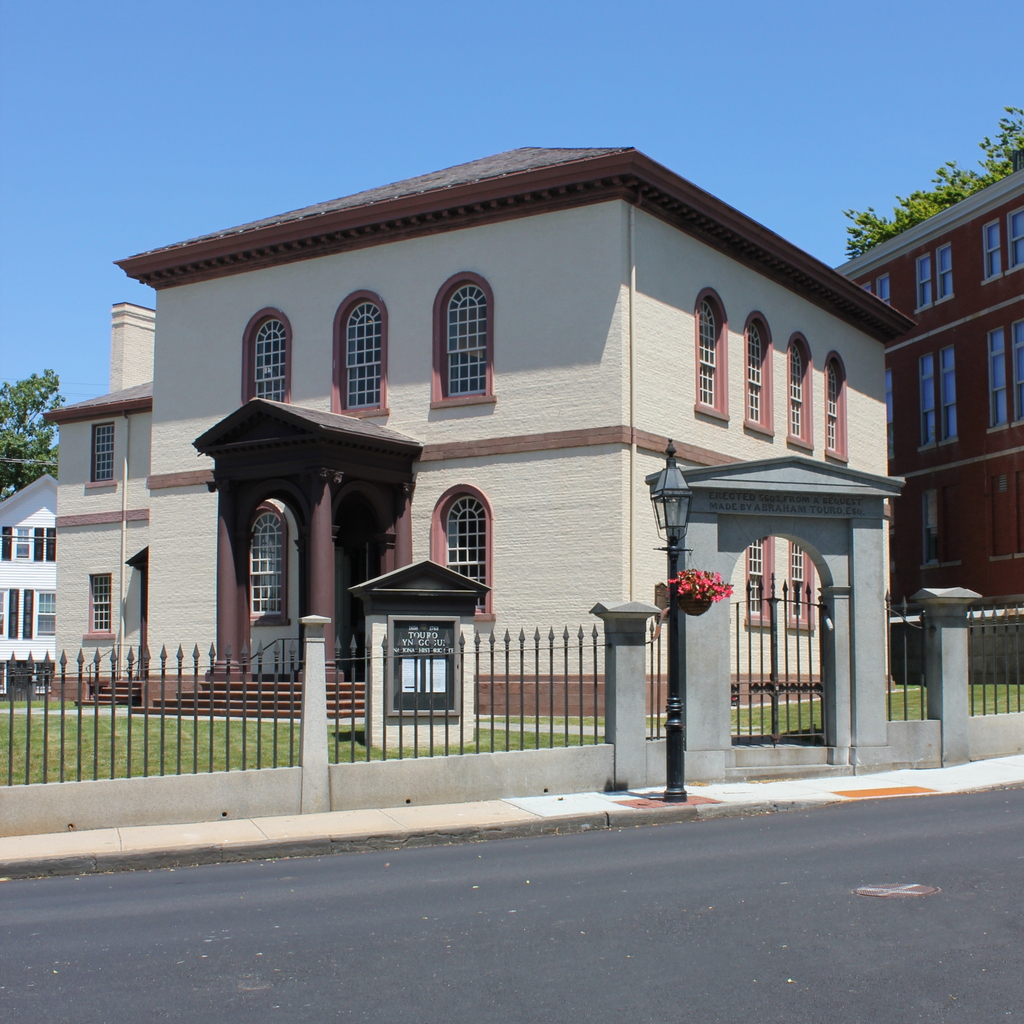The Touro Synagogue on Touro Street in Newport, sometime between 1870 and 1890. Image courtesy of the New York Public Library.
The synagogue in 2017:
Rhode Island was established by colonists seeking religious freedom, and for many years it was a haven for a variety of religious minorities. Some of the first Jewish settlers in the present-day United States arrived in Newport as early as 1658, and by the mid-18th century there was a sizable Jewish community here, drawn by both religious tolerance and business opportunities in the thriving seaport town. The decades prior to the American Revolution were Newport’s heyday as a commercial port, and one of the most prosperous merchants was Aaron Lopez, a Jewish immigrant from Portugal who arrived here in Newport in 1752.
Together with Rabbi Isaac Touro and other leading Jews in Newport, Lopez helped to establish this synagogue, and they hired architect Peter Harrison to design the building. Considered to be the first professionally-trained architect in the American colonies, Harrison designed several other buildings in Newport, including the Redwood Library on Bellevue Avenue and the Brick Market at Washington Square, and he also designed Christ Church in Cambridge and King’s Chapel in Boston. His synagogue, though, is considered by some to have been his finest work, since it demonstrated his ability to blend classical architecture with the specific requirements of Jewish tradition.
The synagogue was completed in 1763, right at the peak of Newport’s prosperity. However, the American Revolution began just over a decade later, causing a severe disruption of trade as well as a long British occupation of the town. Newport never fully recovered its prewar prosperity as a seaport, and many of the Jewish residents left during the war. Rabbi Touro fled to Jamaica at the start of the British occupation in 1776, and Aaron Lopez also left around the same time, moving first to Portsmouth and then to Providence and to Massachusetts. He lost much of his fortune in the war, and he ultimately died in 1782 while on his way back to Newport, when his horse and carriage fell into a pond in Smithfield.
With most of Newport’s Jewish population gone, the synagogue closed in 1791 and remained vacant for the next 60 years. However, it was not completely forgotten, and Isaac Touro’s sons, Abraham and Judah, both left large bequests to maintain the building. These funds enabled restoration projects in the 1820s and 1850s, as well as the granite and cast iron fence, which was built around the property in 1842. Beginning in the 1850s, the synagogue was used intermittently, as Newport started to become a popular summer resort community. In 1883, around the time that the first photo was taken, the synagogue was finally reopened on a permanent basis, nearly a century after the original congregation had left Newport.
Nearly 135 years later, this scene has not undergone any significant changes. The building is still an active synagogue, and it stands as a reminder of Newport’s former preeminence as a seaport and its tradition for religious tolerance. Architecturally, it is still well-preserved, and stands as one of the few surviving works of one of the country’s most important early architects. The building was designated as a National Historic Site in 1946, and in 1968 it became part of the Newport Historic District, a National Historic Landmark district.



This image was created by Newport photographer J. Appleby Williams some time in the 1860s.
Why not write about the fact that Aaron Lopez was a slave trader?
Not important?
This article is about the synagogue; it’s not a biography of Lopez. The fact that he was a slave trader is not unimportant, but it isn’t particularly relevant to the history of the building.